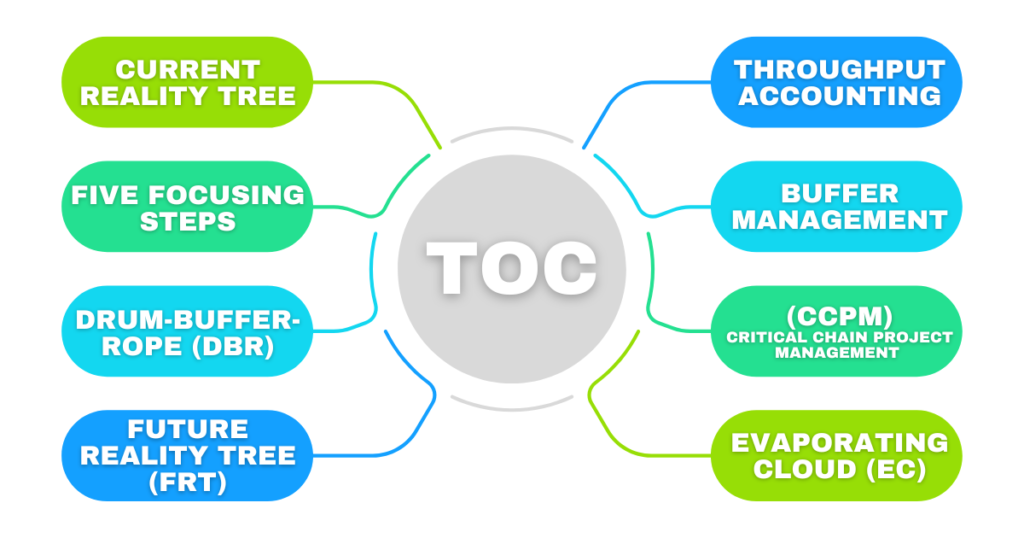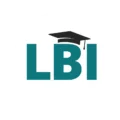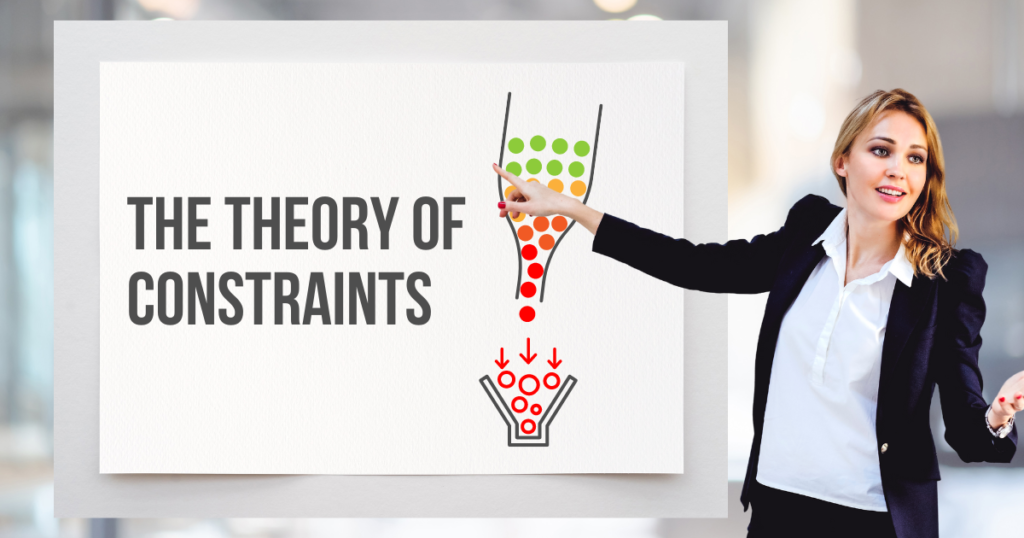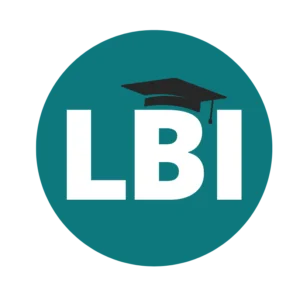Table of Contents
Imagine you’re in a race, but no matter how fast you run, you can’t seem to get ahead. It’s as if an invisible wall is holding you back. This is a scenario many organizations find themselves in, struggling to meet deadlines and stay within budget. The invisible wall? Bottlenecks that are silently eating away at your productivity. But there’s a silver lining – the Theory of Constraints (TOC).
First introduced by Eliyahu M. Goldratt in his seminal book “The Goal: A Process of Ongoing Improvement,” TOC is more than just a management philosophy—it’s a systematic approach to pinpointing and leveraging the constraints within a system. Whether you’re in manufacturing, project management, or any other industry, TOC offers valuable insights into how to enhance productivity and achieve goals.
In this blog, we’ll dive deep into the Theory of Constraints, exploring its fundamental principles, its application in project management, its relationship with lean manufacturing, and practical tools for implementation. By the end, you’ll have a clear understanding of how TOC can revolutionize the way you approach problem-solving and drive continuous improvement within your organization. Let’s unlock the potential of TOC together.
What is the Theory of Constraints?
The Theory of Constraints (TOC) is a management philosophy developed by Eliyahu M. Goldratt, outlined in his book “The Goal: A Process of Ongoing Improvement.” At its core, TOC is a method for identifying and leveraging the constraints within a system to improve overall performance and achieve organizational goals.
Key Points
- Identifying Constraints: TOC recognizes that every system has at least one constraint that limits its performance. These constraints can be anything from machinery and materials to policies and people.
- Systematic Approach: Rather than focusing on individual components or processes, TOC takes a holistic view of the organization as a system of interconnected parts. It emphasizes the importance of addressing constraints to enhance the entire system’s effectiveness.
- Five Focusing Steps: TOC is structured around five key steps:
- Identify the constraint
- Exploit the constraint
- Subordinate everything else to the constraint
- Elevate the constraint
- Avoid inertia and repeat the process
- Continuous Improvement: TOC is not a one-time fix but a continuous process of improvement. It encourages organizations to constantly identify and address constraints to optimize performance over time.
In essence, the Theory of Constraints provides a framework for understanding and improving the factors that limit productivity and hinder goal attainment within an organization. By applying its principles, businesses can streamline processes, increase throughput, and ultimately drive greater success.
Enroll the Theory of Constraints Comprehensive course.
Key Principles of the Theory of Constraints
The Theory of Constraints (TOC) is built upon several key principles that guide its application in various domains. Understanding these principles is essential for effectively leveraging TOC to improve organizational performance. Here are the key principles of the Theory of Constraints:
1. Identification of Constraints
- TOC emphasizes the identification of constraints, which are factors that limit an organization’s ability to achieve its goals.
- Constraints can be physical, such as machinery or resources, or they can be policy-related, such as regulations or protocols.
- By identifying constraints, organizations can focus their efforts on addressing the most critical bottlenecks that impede progress.
2. Exploitation of Constraints
- Once identified, constraints should be exploited to their fullest potential. This involves maximizing the utilization of constrained resources to enhance overall system performance.
- Strategies for exploiting constraints may include optimizing workflow, improving resource allocation, or implementing specialized techniques to increase efficiency.
3. Subordination of Non-Constraints
- TOC advocates for subordinating non-constraints to the constraints. This means ensuring that non-constrained resources and processes support and align with the needs of the constrained elements.
- By aligning all activities with the goals of the constraint, organizations can prevent non-constraints from creating unnecessary barriers to performance improvement.
4. Elevation of Constraints
- Elevating constraints involves taking actions to increase the capacity or effectiveness of constrained resources.
- This may involve investing in additional resources, redesigning processes, or implementing new technologies to alleviate constraints and improve system performance.
5. Continuous Improvement
- TOC promotes a culture of continuous improvement, wherein organizations constantly strive to identify and address constraints to achieve higher levels of performance.
- Through ongoing analysis, adaptation, and refinement, organizations can sustainably enhance their processes and achieve their strategic objectives.
6. Integration with Lean and Six Sigma
- TOC can be integrated with other improvement methodologies such as Lean and Six Sigma to create a comprehensive approach to organizational improvement.
- By combining TOC principles with Lean’s focus on waste reduction and Six Sigma’s emphasis on process variation reduction, organizations can achieve synergistic effects and drive significant performance improvements.
By adhering to these key principles, organizations can effectively apply the Theory of Constraints to optimize their processes, maximize resource utilization, and achieve superior performance outcomes.
Applying TOC in Project Management

The Theory of Constraints (TOC) is not limited to manufacturing; it can also be effectively applied in project management to identify and overcome bottlenecks that hinder project success. Here’s how TOC principles can be applied in project management:
1. Identifying Constraints
- In project management, constraints can manifest as limitations in time, scope, or cost. Identifying these constraints is crucial for understanding what is holding the project back.
- Tools such as Flow Charts, Swim Lane Diagrams, and Root Cause Analysis can help map out processes and pinpoint where constraints exist.
2. Managing the Constraint
- Once the constraint is identified, the next step is to manage it effectively. This involves finding ways to increase efficiency in the constrained area.
- Solutions may involve reallocating resources, adjusting schedules, or optimizing workflows to ensure the constraint does not hinder project progress.
3. Evaluating Performance
- After implementing solutions to manage the constraint, it’s essential to evaluate performance to determine if the changes have been effective.
- If the constraint continues to negatively impact project performance, further adjustments may be necessary. If successful, the focus can shift to identifying and managing new constraints.
4. Continuous Improvement
- Similar to its application in manufacturing, TOC in project management is a continuous improvement process. It requires ongoing monitoring and adjustment to ensure optimal project performance.
- By continually identifying and addressing constraints, project managers can streamline processes, enhance productivity, and deliver successful outcomes.
In project management, the Theory of Constraints provides a systematic approach to overcoming obstacles and achieving project goals. By applying TOC principles, project managers can effectively manage constraints, optimize resources, and deliver projects on time and within budget.
Relationship Between TOC and Lean Manufacturing

The relationship between the Theory of Constraints (TOC) and Lean Manufacturing is one of the complementary philosophies aimed at enhancing organizational performance. While they approach improvement from different angles, both methodologies share common objectives and can be integrated to achieve synergistic effects. Here’s an overview of the relationship between TOC and Lean Manufacturing:
1. Shared Goal of Continuous Improvement
Both TOC and Lean Manufacturing share a common goal of driving continuous improvement within organizations.
While TOC focuses on identifying and alleviating constraints to improve system performance, Lean Manufacturing aims to eliminate waste and streamline processes to enhance efficiency.
2. Focus on Value Stream Optimization
Lean Manufacturing emphasizes the optimization of value streams, which involves identifying and eliminating non-value-added activities to enhance flow and reduce lead times.
Similarly, TOC advocates for the subordination of non-constraints to constraints to ensure optimal utilization of resources and minimize delays in the value stream.
3. Integration of TOC Principles in Lean Practices
Many Lean practitioners recognize the value of TOC principles and incorporate them into their improvement initiatives.
For example, TOC’s focus on identifying constraints aligns well with Lean’s emphasis on identifying bottlenecks and addressing them to improve flow.
4. Synergistic Effects of Combined Approaches
Integrating TOC and Lean Manufacturing can lead to synergistic effects, wherein the strengths of each approach complement one another to achieve superior results.
By leveraging TOC’s constraint-focused approach alongside Lean’s waste reduction techniques, organizations can achieve significant improvements in both throughput and efficiency.
5. Application of TOC in Lean Tools and Techniques
TOC can be applied within various Lean tools and techniques to enhance their effectiveness.
For example, TOC’s Drum-Buffer-Rope (DBR) methodology can be integrated with Lean production scheduling to synchronize production flow and minimize inventory.
6. Continuous Learning and Adaptation
Organizations that embrace both TOC and Lean Manufacturing foster a culture of continuous learning and adaptation.
By continuously refining their processes and practices based on insights from both methodologies, organizations can sustainably improve their performance over time.
The relationship between TOC and Lean Manufacturing is characterized by shared objectives, complementary approaches, and synergistic effects. By integrating the principles and practices of both methodologies, organizations can achieve enhanced operational efficiency, improved throughput, and sustained competitive advantage.
Tools and Techniques for Implementing TOC

Implementing the Theory of Constraints (TOC) involves utilizing various tools and techniques to identify, exploit, and manage constraints within an organization’s processes. These tools provide a structured approach to analyzing constraints and formulating effective solutions. Here are some key tools and techniques for implementing TOC:
1. Current Reality Tree (CRT)
- The Current Reality Tree is a graphical tool used to depict the cause-and-effect relationships that contribute to the current state of a system.
- By identifying the root causes of undesirable effects or constraints, the CRT helps pinpoint areas for improvement and guides decision-making towards addressing the most critical issues.
2. Five Focusing Steps
- The Five Focusing Steps provide a systematic framework for addressing constraints and improving system performance.
- These steps include identifying the constraint, exploiting the constraint, subordinating all other activities to the constraint, elevating the constraint, and repeating the process to achieve continuous improvement.
3. Drum-Buffer-Rope (DBR)
- DBR is a production scheduling methodology that aims to synchronize workflow and optimize throughput in accordance with the capacity of the system’s constraint.
- By establishing a drumbeat (pace of production) based on the constraint’s capacity, buffering critical resources, and implementing a signalling mechanism (rope) to control workflow, DBR minimizes idle time and maximizes overall system performance.
4. Future Reality Tree (FRT)
- The Future Reality Tree is used to envision the desired future state of a system by identifying and implementing necessary changes or improvements.
- By outlining the cause-and-effect relationships between proposed interventions and desired outcomes, the FRT provides a roadmap for achieving the organization’s goals and overcoming constraints.
5. Throughput Accounting
- Throughput Accounting is a management accounting approach that focuses on optimizing the flow of value through the organization.
- By prioritizing decisions based on their impact on throughput (rate of generating money), TOC encourages organizations to align their actions with the goal of maximizing overall system performance.
6. Buffer Management
- Buffer Management involves monitoring and managing the buffers (inventory or time) associated with critical resources or processes.
- By ensuring that buffers are appropriately sized and replenished, organizations can mitigate the impact of variability and uncertainty on system performance, thereby improving reliability and responsiveness.
7. Critical Chain Project Management (CCPM)
- CCPM is a project management methodology derived from TOC principles, focusing on identifying and managing the critical chain of tasks within a project.
- By protecting the critical chain from interruptions and uncertainties through the use of buffers, CCPM aims to enhance project delivery speed and reliability while minimizing resource contention and multitasking.
8. Evaporating Cloud (EC)
- The Evaporating Cloud is a conflict resolution tool used to identify and resolve underlying conflicts or assumptions that hinder problem-solving and decision-making.
- By clarifying conflicting perspectives and generating creative solutions, the EC facilitates consensus-building and promotes effective collaboration towards achieving organizational goals.
These tools and techniques provide valuable resources for organizations seeking to implement the Theory of Constraints and drive continuous improvement. By leveraging these tools effectively, organizations can identify, address, and overcome constraints to enhance performance, optimize resource utilization, and achieve their strategic objectives.
Conclusion
The Theory of Constraints (TOC) offers a powerful framework for organizations to identify, manage, and overcome constraints that limit their performance and hinder goal attainment. By focusing on the systematic identification of constraints and the application of targeted interventions, TOC enables organizations to optimize their processes, enhance throughput, and drive continuous improvement.
Through the key principles of TOC, including the identification of constraints, exploitation of constraints, and synchronization of activities, organizations can streamline operations, minimize waste, and maximize value delivery. Additionally, the relationship between TOC and lean manufacturing highlights the complementary nature of these methodologies in achieving operational excellence and fostering a culture of continuous improvement.
By implementing tools and techniques such as the Current Reality Tree, Five Focusing Steps, Drum-Buffer-Rope, and others, organizations can effectively diagnose issues, develop solutions, and monitor progress towards achieving their objectives. These tools provide valuable insights and guidance for decision-making, enabling organizations to make informed choices that align with their strategic goals and drive sustainable performance improvements.
In conclusion, the Theory of Constraints offers a holistic approach to organizational management, emphasizing the importance of identifying and addressing constraints to unlock hidden potential and drive success. By embracing TOC principles and leveraging its tools and techniques, organizations can navigate complex challenges, optimize their operations, and achieve greater levels of efficiency, effectiveness, and competitiveness in today’s dynamic business environment.
Additional Resources
- “The Goal: A Process of Ongoing Improvement” by Eliyahu M. Goldratt – This seminal work by Goldratt provides a detailed exploration of the Theory of Constraints and its application in improving organizational performance.
- “Lean Thinking: Banish Waste and Create Wealth in Your Corporation” by James P. Womack and Daniel T. Jones – This book offers insights into lean manufacturing principles and how they can be integrated with TOC to drive operational excellence.
- “Thinking, Fast and Slow” by Daniel Kahneman – While not directly related to TOC, this book provides valuable insights into decision-making processes and cognitive biases that can impact organizational performance.
- “The Lean Startup: How Today’s Entrepreneurs Use Continuous Innovation to Create Radically Successful Businesses” by Eric Ries – This book explores lean startup methodologies and their alignment with TOC principles in driving innovation and agility.
- Online Courses and Training Programs – Theory of Constraints Online Course with Certification by Robert Chapman







